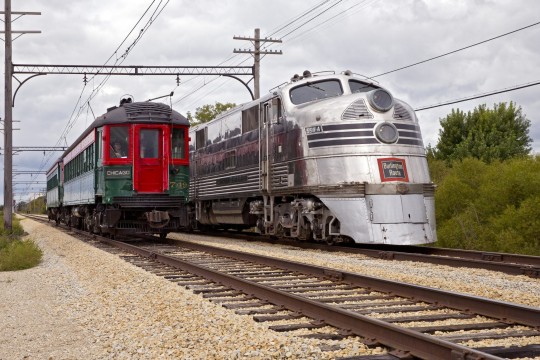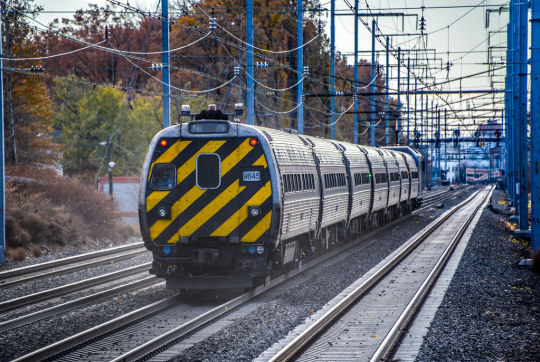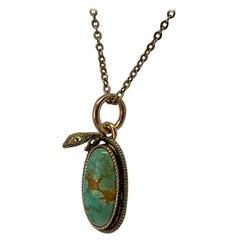#Mexican Railroads
Explore tagged Tumblr posts
Text
Actually I've got some spicy takes about tren Maya, they shouldn't have started building it since there was existing Right-of-way they could of used but since they cleared the Right-of-way they absolutely have to finish it because the Right-of-way is the most expensive and damaging part of the process and it's also the first step of building a railroad after planning and surveying, and while yes they shouldn't have started it when they had existing rail lines they could have upgraded, that ship has sailed Tren Maya is about 95% complete and moar tren moar good usually because Train good car bad, even if it is being built for the wrong reasons once construction begins you NEED to finish it otherwise you get all the bad with none of the good
Also they are Electrifying it and hopefully they rebuild the old Mexican railroad system especially considering lots of people are nostalgic for the NdeM (National Railroads of Mexico) which was a very good system until they sold it off to Union Pacific, Kansas City Southern, and Genesee & Wyoming in the 90s (keep in mind all of those Railroads are American although KCS just merged with Canadian Pacific)










As someone from Mexico I feel deeply obligated to let the US left know that Claudia Sheinbaum is neither of these things and while having a women rule the country for the first time is a historic achievement it is not the win you think it is

She is of jewish descent and made one statement for Palestine but never pressured the mexican goverment to break ties with Israel and one of her proposals as a president is to give the military here ( that btw is trained by the Isr*eli army) more power
As the mayor of Mexico City she constantly used the riot police against protestors and allowed the use of tear gas ( which she later claimed wasn't true)
She calls herself a feminist but always refused to acknowledge the wave of violence Mexico faces against women ( 11 women dissapear every day in Mexico) She has also knowingly made men accused of SA part of her campaign team
She also supports "Tren Maya", a project that caused massive ecological devastation in the mayan jungle and facilitated military violence against indigenous communities
You don't live here, you don't know shit so please don't push this kind of narrative idolizing these people
this is not a win for us
#trainposting#tren maya#train propaganda#electric traction#cpkc#Canadian Pacific Kansas City#Ferromex#Mexican railroads#nationales de Mexico#hot take
10K notes
·
View notes
Text

—Did you know that Juneteenth is also celebrated in a part of Mexico? Nacimiento Mexico was once home to thousands who escaped slavery in the US. As many as 10,000 slaves followed a clandestine Southern Underground Railroad to Mexico. —To date, many Black Mexicans from the Texas area retrace a portion of the same route their African American ancestors followed in 1850 when they escaped slavery. —Descendants of slaves who escaped across the southern border observe Texas’s emancipation holiday with their own unique traditions in the village of Nacimiento. —Slave hunters would patrol the southern border for escapees, led by the Texas Rangers but the Mexican army would be there waiting for them (the slave hunters) to turn them away.
x
#juneteenth#mexico#nacimiento mexico#black mexicans#african american ancestors#slavery escape route#southern underground railroad#texas#emancipation holiday#unique traditions#slave hunters#texas rangers#mexican army
7K notes
·
View notes
Video
Wildflowers and the Mexican Canyon Trestle by Mark Stevens Via Flickr: While at the Trestle Vista Observation Site in Lincoln National Forest with a view looking to the southeast.
#Azimuth 146#Bridge#Cloudy#Day 4#DxO PhotoLab 6 Edited#Evergreen Trees#Evergreens#Forest#Forest Landscape#Grassy Area#Grassy Field#Grassy Marsh#Grassy Meadow#Hillside of Trees#Intermountain West#Landscape#Landscape - Scenery#Lincoln National Forest#Looking SE#Meadows#Mexican Canyon Railroad Trestle#Mexican Canyon Trestle#Mostly Cloudy#Mountainside#Nature#Nikon D850#No People#Outside#Overcast#Partly Cloudy
2 notes
·
View notes
Text
i just think its really cool to headcanon ennis as having mexican ancestry. i just think its really neat.
#i think he had a great great grandfather who was a mexican born in what is now known as the southwest us during the period when that#territory was annexed into the us after the mexican-american war and i think he grew up in a region that had a bit of american immigration#so he grew up learning english and whatnot#and since mexicans were the og cowboys i think he grew up doing ranch work and was hired to do a cattle drive from tx to#wyoming around the time of the civil war. and then when he got there he met a purdy little irish girl who's family moved to#wyoming following the construction of the railroad in the state#and they met and fell in love and bam#they made little mexican irish catholic babies#then of course they just kinda lost ties to their mexican heritage as the bloodline continued bc that great grandpa was the only ethnically#nonwhite member ofthe family or smth so any connection to that culture disappeared by the time ennis' parent was born (i think its his mom)#and it just becomes one of those things were his mom is like you know we have mexican blood in us right son#its the only way i can reckon with all these hispanic names in the source material lol#'del mar'#'aguirre'#there be hispanics a-foot....#still brokeback posting#brokeback mountain
3 notes
·
View notes
Note
Fun fact they have a varient of the Xtrapolis used on Intercity Trains in Southeastern Mexico









There are also these Electric Commuter Trains used around Mexico City, Mexican railways are very odd because they tend to used European Passenger Trains with American Freight Equipment, but they don't have many passenger trains since they cancelled almost all of them in the 90s when the Railroads were privatized and sold off to Union Pacific, Kansas City Southern, and Genesee & Wyoming (all of which are American Railroads) although the Kansas City Southern railroad merged with Canadian Pacific recently
Trains? >:3
TRAINS :D










#trainposting#Mexican Railroads#mexico city#tren maya#commuter rail#commuter train#cpkc#canadian pacific#Canadian Pacific Kansas City
17 notes
·
View notes
Text
that movie sosososos good
#forever pissed fof that the reboot or whatever#has the fuckin. a girl whos dad owns rhe railroad. or something#how do you see this goddamn movie and be like omg yayy the railroad#ik i am literally a train guy but quite literally whatt is wrong w the ppl who did the reboot. t have a special white girl whos dad owns#the railroad as the mc. gd#obligatory havent seen it But it annoys me. so#ETA: researched and the girl isnt white thats my bad. her mom was mexican#her dad is a white railroad owner though. which i think is like. -_-
1 note
·
View note
Text
"The vast majority of white shopmen did strike. That there was not a total walkout was due to local circumstances. On the Great Northern Railroad, the total number of strikers reached 93 percent, but in some locales shopmen continued to work. For example, in St. Cloud, Minnesota, 49 percent of the men remained at work in the shop and 40 percent in the roundhouse. Other weak points included the roundhouses of Clancy, Montana; Rugby, North Dakota; and Anacortes, Washington. 16 In California, a local strike official reported that "Fresno and San Jose did not respond as they should have done." In the East, a local strike leader reported from the Baltimore and Ohio system federation that "The majority of the men that are in are from the Mt. Clara shop at Baltimore."
The striking shopmen faced important obstacles in presenting a united front. The support of African Americans, Hispanics, Native Americans, and Asians was an important key to the strikers' attempts to win the battle. While the majority of white shopmen struck on July 1, for minorities the question was complicated by the endemic racism of the shopcrafts. Because such workers were regularly rejected by shopcraft unions and prevented from moving up to skilled positions, their potential as a divisive force became readily apparent. Indeed, in reaction to this history of discrimination, some minorities scabbed. In Alabama large numbers of blacks continued to work. J. W. West, a carmen strike leader on the Louisville and Nashville Railroad, reported that black shopmen remained at work in Birmingham and Mobile. In Winslow, Arizona, the bulk of the scab workforce included "some forty odd Indian carmen and Japanese machinists."
Strikebreaking by Native Americans in some cases was tied to longstanding reciprocal relations. The Laguna Pueblo of New Mexico, for example, had long been connected to the Santa Fe Railroad. Since 1880, when the Laguna Pueblo had signed a "Gentlemen's Agreement of Friendship," they were guaranteed railroad jobs throughout the New Mexico territory. In 1922, Santa Fe management asked the Launa Pueblo workers to travel to Richmond, California, and take the places of the striking shopmen. The Laguna Pueblo workers agreed. One later testified they'd informed the company: "you always call us [when you] need help, we'll help you, you know."
While some did join the scab forces, minorities in large numbers actively supported the strike. African American shopmen established strong strike organizations in North Carolina and Louisiana. In Algiers, Louisiana, where blacks made up the majority of the shopcrafts, all came out led by a "negro president of the Algiers Blacksmith Helpers Auxiliary," who was described as an "organizer of merit and a forceful speaker." A union report from El Paso, Texas, confirmed that "ninety per cent" of the black shopmen "are with us." White strikers in some locales actively encouraged black shopmen to join the fight. At Richmond, Virginia, white strike leaders addressed the meetings of black helpers and laborers. T. J. Garvey, a boilermaker leader on the Southern Railroad, explained to one meeting that the strike would be "beneficial to the colored as well as the white [shopmen]." To further encourage the black strikers to hold fast, Garvey spelled out a future of mutual cooperation: "we should co-operate with one another and get closer together in the future than we have been in the past." A similar promise was given black strikers at Pensacola, Florida. Local strike leader G. H. Waugh, although recognizing that the African American strikers were "not organized," promised that "when the Whites go back at Pensacola, the Blacks [will] go [back] with them." But even when strikers courted black support, it was all too clear to the recipients of their sudden solicitude that their newfound acceptance was purely opportunistic. Thus, declared a white North Carolina unionist, African American helpers "could easily fill our places," and "they are a great help to us as pickets."
Shopmen of Japanese origin also solidly supported the strike. Japanese in Sparks, Nevada, "assured" the local organization that "would not return to work until the strike was settled." In Sacramento, California shopmen, a strike bulletin reported, "The Japs are with the strikers 100 percent and their secretary goes with the boys when soliciting donations from the Japs." Equally supportive were shopmen of Mexican origin. Not only did most of the Mexican American shopmen stay out on strike, they engaged in strategic picket duty on the U.S.-Mexican border. Up until July 22, these pickets managed to stop "at least sixteen hundred men from arriving in the United States to perform work on the railroads." At El Paso, Texas, Mexican Americans took the lead on the picket line. One Anglo machinist striker unknowingly, and laced with racist sentiment, detailed the commitment exhibited by Mexican American strikers to a military intelligence informant:
He says the Americans were willing to do the leading in the walk-out, but that they were shirking their duty on the picket line by leaving that responsibility altogether to the Mexicans, whom the strike leaders should be wary about trusting.
The Mexican American strikers endured not just disparate picket duty and racial stereotyping but also pressure from merchants to pay bills. One striker explained on July 21 that merchants spread propaganda that the strike was lost and that the Mexican Americans should return to work because of mounting bills. The strikers resisted this coercion; the informant insisted that the "Mexicans [were holding] together and that they will remain loyal to the union." Pressure from merchants on this group of workers was particularly felt due to their semiskilled and unskilled status. A machinist helper known only as Marquez claimed they had "nothing" saved when the strike began and that "many of the striker's wives are working now.' These wives experienced some difficulty in finding work "as many of rgw homes which formerly employed Mexican help have also been affected by the strike.' Thus the whole community had tightened its collective financial belts.
Remarkable in their championing of a conflict led and controlled by whites, minorities in large numbers stood on the picket lines and listened to speeches that applauded their "new-found" virtues as striking "brothers" or at least distant cousins. Sterling Spero and Abram Harris noted that "organized" "Negro helpers" went out on strike in 1922, and "stayed out as long the while mechanics. For the most part, this observation is correct. Minority shopmen's decision to strike mirrored that of whites. Like their white counterparts, some were encouraged by local circumstances to scab, but most joined the battle, recognizing a fundamental kinship. As Eric Arneson's and Joe Trotter's work with waterfront workers and miners has shown, occupational segregation did not preclude joint action when framed against a backdrop of fighting a common enemy."
- Colin J. Davis, Power at Odds: The 1922 National Railroad Shopmen’s Strike. Urbana and Chicago: University of Illinois Press, 1997. p. 67-71.
#strike#strike violence#strikebreaking#scabs#railway workers#railroad shopmen#union men#american federation of labor#railway capitalism#working class struggle#united states history#academic quote#reading 2024#racism in america#japanese americans#mexican americans#african americans#white america
0 notes
Text
Trainfuckers










trains do fuck actually
#trainposting#trolleyposting#amtrak cascades#caltrain#milwaukee road#bc rail#tumbler ridge#pennsylvania railroad#penn central#northeast corridor#new york central#railroad Electrification#railway electrification#electrified railroads#general electric#electric traction#stadler#mexican railways#trainfuckers
4K notes
·
View notes
Text

I don't know if you're American or not but in my experience as a person who is not American, American events and media are so incredibly loud and visible that they tend to leech into everything.
Like I'm Canadian born and raised and can name more American presidents than I can Canadian Prime Ministers. I have Canadian friends from Canada who can accurately describe themselves as Liberals but are still sorta foggy on NDP policies. Do you know what day Canada Day is? It's July 1st. Do you know what's on my dashboard on July 1st? Early posts about July 4th.
And if you're an American reading this: Or, hell, anyone else reading this: We all know George Washington was the first American President. Do you know who the first Prime Minister of Canada was? Can you name two British political parties? What are two countries that have Monarchies, not Democracies? What was the most recent political scandal you can think of that took place outside the US? What's your favourite TV show that takes place anywhere outside of America? What are your top three favourite non-american musicians? If English is your first language, how many foreign countries can you go to where you don't speak the language, but don't have to worry about it?
I said "International America Day" as a joke, but there is a very real phenomenon in countries outside of the US where the general population becomes Americanized through the prevalent American media.
We know American current events, we know American scandals, we know about American cops and American movies and American accents and American fast food chains. We have serious opinions on the American legal system and we talk about American law and American policy and American celebrities, and many of us don't know Jack Shit about what's going on where we live.
I'm Canadian. I've heard all about 'building the wall' and ICE and Jan 6th, the intentional government distribution of narcotics in Black communities and the use of Marijuana Illegalization to persecute Black and Mexican people under the Nixon administration.
Do you know what Canada did to Chinese immigrants to build the Canadian railroad? What about the Sterilization Act? Residential Schools? Do you know what a Status Card is? Does it, or does it not cost money to ride in an ambulance? Can people with breasts legally walk around topless? What's the legal drinking age? What are our biggest cities? Who was our least-popular PM? What are our allied nations? Where does the Canadian military get deployed?
"International America Day" was a goof. But Jesus, it's a little bit serious
*edit: yeah I wrote June instead of Jan my bad
#Politics#America#Canada#History#Idk boys I m growing up and learning what I don't know and it's scary#America just Does This
4K notes
·
View notes
Text
























the house as a haunting unto itself
kitty horrorshow, anatomy / phoebe bridgers, garden song / james wan, the conjuring / tracy k smith, ash / vc andrews, flowers in the attic / hollis brown thornton, 1986 / sylvia moreno garcia, mexican gothic / elias tigiser / dale bailey, the h word; bringing the horror home / danez smith / brian de palma, carrie / tori hamatani / leah horlick, ghost house / edward hopper, house by the railroad / mabel podcast / yellowjackets, the dollhouse / mark z danielewski, house of leaves / gillian flynn, sharp objects / thomas flint, haunted house / mike flannigan, the haunting of hill house / the duffer brothers, stranger things / joan tierney, why are you haunted? a survey / benjamin konig / richard siken, real estate.
85 notes
·
View notes
Text
The President of Mexico may force American Freight Railroads to electrify their trains as he has promised to force them to allow for electrified passenger rail on their tracks in Mexico
188 notes
·
View notes
Text

Hidden History: The Southbound Path to Freedom
When we think of the history of slavery in Texas, Juneteenth in Galveston often comes to mind. However, historians Samuel Collins Ill and Dr. Juan Govea reveal a deeper story that predates Juneteenth by decades. Long before the Emancipation Proclamation, Hispanic abolitionists played a crucial role in helping enslaved people escape to Mexico.
In Texas, the Underground Railroad didn't just lead north; it also ran south. Mexico, having outlawed slavery, welcomed fugitive slaves, offering them freedom and citizenship.
This lesser-known chapter of history shows that enslaved people were not just waiting to be rescued. Many saved for years to pay for their escape to Mexico, demonstrating immense resilience and determination.
Marriages between Mexican men and enslaved African women further illustrate the deep bonds and solidarity in this fight for freedom.
Some who found freedom in Mexico went on to build successful lives. For example, a former slave of Sam Houston became a barber in Matamoros, while another rose to the rank of officer in the Mexican army.
These stories challenge us to broaden our understanding of the Underground Railroad and recognize the diverse efforts that contributed to the fight against slavery. Let's honor the courage and solidarity of those who took the southbound path to freedom, and those who assisted them.
•••
Historias Escondidas: El camino hacia la libertad en dirección al sur
Cuando pensamos en la historia de la esclavitud en Texas, Juneteenth o el Día de la Liberación es lo primero que cruza nuestras mentes. Sin embargo, los historiadores Samuel Collins Ill y Dr. Juan Govea, revelan una historia que sucedió muchas décadas antes del Día de la Liberación. Mucho antes de la Proclamación de Emancipación, los abolicionistas hispanos jugaron un papel crucial en ayudar a las personas esclavizadas a escapar hacia México.
En Texas, el Ferrocarril Subterráneo no solo se dirigía al norte, también se dirigía al sur. México, al ilegalizar la esclavitud, le daba la bienvenida a fugitivos esclavizados, ofreciéndoles libertad y ciudadanía.
Este capítulo de la historia de cual no muchos saben, demuestra que las personas esclavizadas no solo estaban esperando a ser rescatadas. Muchos ahorraron por años para pagar por su escape hacia México, demostrando que tenían inmensa determinación y resiliencia.
Los matrimonios entre hombres mexicanos y mujeres africanas esclavizadas, demuestran aún más los lazos profundos y la solidaridad en esta lucha por la libertad.
Algunos de los que encontraron libertad en México, construyeron vidas exitosas. Por ejemplo: uno de los antiguos esclavos de Sam Houston se convirtió en barbero estando en Matamoros, mientras que otro ascendió al rango de oficial en el ejército mexicano.
Estas historias nos desafían a ampliar nuestra comprensión sobre el Ferrocarril Subterráneo y a reconocer los diversos esfuerzos que contribuyeron a la lucha contra la esclavitud. Honremos la valentía y la solidaridad de quienes tomaron el camino del sur hacia la libertad y de quienes los ayudaron.
#black history is everybody's history#historyfacts#black history is world history#black history is american history#black history month#blackhistoryeveryday#blackhistoryyear#blackhistory#blackhistory365#blackhistoryfacts#blackhistorymonth#black history#blackheroesmatter#blacklivesmatter#history#mexico#mexican#spanish#english#español#blackpeoplematter#historia#lasvidasnegrasimportan#knowyourhistory#culture#black history matters#blacklivesalwaysmatter#enslaved#blackbloggers#blackownedandoperated
31 notes
·
View notes
Text
Have any of you guys heard of the Tumbler Ridge Subdivision of BC rail


It was Canada's only high voltage AC electrified railroad but it was sadly de-electrified in 2000 by Canadian National and it's sadly I similar story for many other electrified railroads in north America including Mexican National Railways and the Trenton Cutoff and the Milwaukee Road's Pacific extension
#railroad#milwaukee road#BC rail#conrail#mexican railways#electrified railroads#mourning the Milwaukee Road
17 notes
·
View notes
Video
Struts, Braces and Beams of the Mexican Canyon Trestle by Mark Stevens Via Flickr: A setting looking to the southeast while taking in views at the Trestle Vista Observation Site in Lincoln National Forest.
#Azimuth 147#Bridge#Cloudy#Day 4#DxO PhotoLab 6 Edited#Evergreen Trees#Evergreens#Forest#Forest Landscape#Hillside of Trees#Intermountain West#Landscape#Landscape - Scenery#Lincoln National Forest#Looking SE#Mexican Canyon Railroad Trestle#Mexican Canyon Trestle#Mostly Cloudy#Mountainside#Nature#Nikon D850#No People#Outside#Overcast#Partly Cloudy#Project365#Ridgeline#Ridges#Sacramento Mountains#Scenics - Nature
4 notes
·
View notes
Text
#tumblr polls#red dead redemption 2#red dead redemption two#red dead fandom#red dead redemption#rdr2#rdr#rdr1#arthur morgan#john marston#charles smith#sadie adler#jack marston#kieran duffy#red harlow#uncle rdr2#landon ricketts#bonnie macfarlane#gta v#rockstar games#gaming#gaming poll#red dead redemption community
70 notes
·
View notes
Note
*grabs you by the throat (/j)* give me as many Wild West facts physically possible, and also if you know any good websites/videos on The Wild West possibly pretty please blinks eyes 🥺🥺👉👈
this is gonna be a doozy welcome to my autism.
my area of expertise relates to southeastern wyoming btw kisses. this is going to be very long. starts out rambly and then i busted out my actual notes that ive been compiling. if you have specific areas you wanna know about feel free to ask i love using my major for this stuff :D
before the cut im gonna include my fav websites i reference (i dont do much video research sorry, im the bitch with a bookshelf full of heavily annotated books and a fat google doc file)
for fashion: https://www.metmuseum.org/art/collection/search?geolocation=North+and+Central+America&era=A.D.+1800-1900&material=Costume&showOnly=withImage
for navajo info (you can look at my comic if you wanna know why i focused on this tribe specifically): https://www.navajo-nsn.gov/
for dialogue/slang: https://freepages.rootsweb.com/~poindexterfamily/genealogy/OldWestSlang.html
OK TIME TO RELEASE THE AUTISM
so there were reservations right. wanna know the events leading up to the battle of little bighorn? basically in the 1850s the sioux tribe, crow tribe, and northern arapaho tribe (roughly speaking, these are the tribes most mentioned from this time) were all forced to live in the same range of territory spanning northern wyoming, around the little bighorn river. there was the fort laramie treaty which ensured that the tribes in this area would be provided help for 30 years and that nonnative settlement wouldnt be allowed. well they found gold in the black hills about 20 years later and that went out the window. miners rushed the area for gold and forced the natives to move again. tensions rose, the treaty was ignored by all parties and only mentioned when convenient, and then the battle of little bighorn happened
TRAINS!!!!! TRAINSTRAINSTRAINS. fun fact train robberies were actually very common in the 1800s! jesse james (yes that one) committed the first one in iowa in 1873.
bank robberies were very rare! cus when you think about it, yeah ofc thats gonna be hard. its in the middle of town, its one entrance, and theres safes you gotta either crack in 10 seconds or blow with dynamite, risking the cash inside.
most other crimes include larceny, burglary, home robberies, horse robberies, stage coach robberies, cons, etc.
buffalo :( they were hunted for many reasons. 30 million to less than 100 in the span of about 30 years. they were hunted to piss off the native tribes, since buffalo were sacred to many and when the government had them killed theyd take the skin, the tongue, and leave the carcass to rot before retrieving the bones to ship back to the east for production of stuff like glue. but also, they would be hunted due to the way the buffalo impacted the railroad industry. theyd damage the rails, and in lines going through mountains theyd actually huddle up on the track because its instinctively the safest place to be. this would cause days long backups
last names had some cool stuff happening! after the civil war when slaves were freed, a great deal chose their own names. some chose names after national heros, some would take their parents name, and some would take the name of their old masters as a very intentional way to make sure they could never wipe their hands clean of the cruelty they committed to the enslaved. so yeah thats metal as hell. on a related note, “Historians estimate that 20–25% of cowboys in the American West were African American. They worked as ropers, trail cooks, wranglers, and bronco busters. African Americans learned the cowboy way of life from Mexican or Spanish cowboys, Native American cattle handlers, or their former slave masters. African Americans also contributed to the West as miners, homesteaders, town builders, and entrepreneurs.”
BRIEF ART HISTORY TIME. AKA MY FUCKING MAJOR.
In 1886, American art was influenced by French Impressionism, and American artists began to experiment with the style
Impressionism reflected a modern reality that could be troubling
Impressionist artists expertly depicted the alienation that this new Paris proffered. An unfortunate symptom of such modernity was the loss of an intimate, knowable community; now citizens were strangers in an anonymous crowd.
During the mid-1880s, as French Impressionism lost its radical edge, American collectors began to value the style, and more American artists began to experiment with it after absorbing academic fundamentals.
and now, for some stuff im pasting over from my fat google doc
Country Witchcraft, Wisdom, and Lore
“you can sleep with a skeleton key under your pillow to increase your chances of flight during sleep. you can wrap a horseshoe in white cloth and place it under your pillow to speak with the devil’s wife during your sleep. you can leave a glass of water out and ask your ancestors for visions during your sleep.” (Oberon, 15)
“folkloric witches don't use circles the way most wiccan folks do. circles do pop up in folklore but not too often. circles appear almost always when something is being conjured.” (oberon, 16)
“it was a brass screw in a gun that prevents a witch from placing a curse on the gun” (oberon, 18.)
“piss in a mason jar, throw in broken glass, mirrors, barbed wire, sulfer, and bullets. bury it somewhere on your property. if a spirit or spell comes looking for you they will mistake the urine for you and get caught in the bottle.” (oberon, 19)
fashion

the Victorian tradition of wearing mementos in honor of deceased loved ones. Many of these items included ashes placed into rings or necklaces made out of human hair. However, over time mourning jewelry evolved and became more of a fashion statement, even though most jewelry wearers lived on and continued to struggle with their grief.
the items weren’t just mementos to wear around one’s neck, but were something that you carried with you 24/7, no matter how much you may have hated it.
https://gemgeneve.com/the-necklace-from-antiquity-to-the-present/
Precursor of the Bulgari ones by far, one of the most typical examples is the serpent necklace paved with turquoise. In the 19th century, turquoise stands for “forget me not”, and the colour of the Forget Me Not flower is, precisely, turquoise. Therefore, the stone itself means “don’t forget me”. With the snake biting its tail being the symbol of eternity, this necklace is actually a love jewel. The message of these serpents is not at all about evil, but it is a love message: “Don’t forget me. Love me forever”. As the symbolism of forms and stones is deeper, wearers in the 19th century are much more aware of this particular message.
The necklace remains at the base of the neck, but what changes are the motifs and the materials. In the 1860s and 70s there comes to be a craze for archaeological revival jewellery and women go to wear ancient-looking jewellery. Archaeological revival necklaces were copies of genuine ancient pieces. Jewellers like Castellani try to reproduce not only the design but also the materials, and the techniques. Sometimes, these necklaces are close replicas. Some other times they are pastiches: they look like antique in style but are an invention of the late 19th century jewellers, as no such necklace would ever have been created in ancient times.
Materials become unusual: from little shells to tiger claws, for example: this was a consequence of improved travel, of tourism, and people going travelling and acquiring souvenir jewellery in exotic locations and bringing them back to Europe.
Dances/musicians
https://www.learn2dance4fun.com/dance-classes/country-dance-lessons/western-waltz-dance-lessons/
https://www.tshaonline.org/handbook/entries/babel-a-o
“In the Houston city directory of 1881 he went by the name Alexander O. Babel and continued to be the musical attraction at the Solo Saloon. The Galveston Daily News later commented in 1885: “Whether he played by note or not, he tossed from the keys of the grand piano that stood on a stage at the side of the large hall every variety and shade of music from the most delicate to the most sonorous tones.” Babel also gave concerts in other towns and church festivals in Texas.”
From playing piano in texas to mining in new mexico. Played in chicago, then new york,
Lots of papers making him into a myth. Writer from texas saw this and disproved it.
“Despite the disparaging remarks from some Texas periodicals, Babel created a sensation across the United States to the delight of audiences in Milwaukee, St. Louis, Atchison, New Orleans, Cincinnati, Chicago, New York, and Bangor. He was hailed as a piano master who played more than 1,200 songs and even performed at times with a cloth over the keys. The “Texas Wonder” played at dime museums, concert halls, theaters, and other venues and sometimes gave hourly recitals.”
“By 1887 advertisements included mention of his musical partner, Mattie Babel, dubbed the “cowgirl cornetist.” Most accounts called her Babel’s wife (though at least one newspaper referred to her as his sister). Given that no one named Mattie appeared among the Babel household in early censuses, Mattie Babel was probably A. O. Babel’s wife and possibly the same Emma Rumpel mentioned as the spouse of O. A. Babel in Houston.”
Babel and his wife Mattie continued to give performances well into the 1890s and toured Canada and Europe.
research i did for a specific character whos gonna show up in chapter 4:
Freed people established all-Black towns, such as Bookertee, Clearview, Lima, and Pleasant Valley. These towns provided a market for African-American farmers and a sense of community.
The discovery of gold in 1867 at South Pass drew many immigrants to western Wyoming.
https://en.wikipedia.org/wiki/History_of_slavery_in_Oklahoma#:~:text=The%20history%20of%20slavery%20in,state%2C%20with%20prominent%20racial%20issues.
https://www.taylorfrancis.com/books/mono/10.4324/9780203496756/slavery-cherokee-nation-patrick-neal-minges
the Indian Removal Act was the reason for the movement of the Cherokee, Chickasaw, Choctaw, Creek, and Seminole to Oklahoma (not yet called that. With these nations moving to the west, they brought with them black people, including slaves. This was the beginning of slavery in the land of Oklahoma.
When the Cherokees were relocating it was estimated that 10-15% of the nation were African Americans. This nation in particular brought not slaves, but freed blacks. This was one of the main reasons that they were forced out of their previous land. The nation had become a safe space for slaves to run away to and slave owners wanted to diminish that possibility for slaves in the south.
By 1866, the Cherokee Nation, once so proud, had been reduced to ruins
With the forced removal of the five nations into the land of Oklahoma throughout the course of time, slavery began and progressed in the Indian territory. Specifically, in the Choctaw and Chickasaw nations, slavery and the ownership of black people became common.
https://www.lib.utk.edu/cherokee/EvolutionCherokeePersonalNames.pdf
research i did for the chinese characters
1848: The California gold rush brought more Asians to the United States, especially Chinese people from the Guangdong region
The discovery of gold in 1867 at South Pass drew many immigrants to western Wyoming.
The Union Pacific Railroad's construction in the late 1860s brought settlers to Wyoming. The railroad created towns like Cheyenne, Laramie, and Rock Springs, and attracted cowboys and cattle drives.
The Chinese Exclusion Act of 1882 Many Americans on the West Coast attributed declining wages and economic ills to the Chinese workers who were only 0.002% of the population, Congress passed the Chinese Exclusion Act to placate worker demands and assuage concerns about maintaining white "racial purity." Repealed on December 17, 1943
https://www.globaltimes.cn/content/565882.shtml
During the 1850s, the first revolt of the Taiping Rebellion by the Hakka people took place in Guangdong. Because of direct contact with the West, Guangdong was the center of anti-Manchu and anti-imperialist activity.
https://www.history.com/topics/immigration/asian-american-timeline
https://www.history.com/topics/asian-history/taiping-rebellion
In 1856, a second Opium War broke out with the west, continuing until 1861.
https://www.history.com/topics/19th-century/chinese-exclusion-act-1882
stuff for solveig
“The huge population growth between 1800 and 1900 led to overcrowding within the social structure of the day and was one contributing factor to the wave of emigrants leaving Norway for North-America.”
“During the next centuries, much of the farmland was sold off to the previous leaseholders and became private property for the many. Owning your own land has been – and still is – an important part of the Norwegian identity.”
https://evergreenpost.eu/the-old-norwegian-farm-its-land-and-surroundings/
AND THATS ALL I CAN POSSIBLY THINK OF THAT I HAVE ACCESS TOO RIGHT NOW.... IF YOU HAVE QUESTIONS OR WANNA KNOW ABT SPECIFIC STUFF TELL ME AND I CAN EASILY ANSWER THEM AND PROVIDE A GOOD DEAL OF INFO
#grem rambles#peteytheparrot#ask#YOU OPENED PANDORAS BOX SORRY#IM ENDING THIS AT 241 I WAS TYPING GENUINELY FOR 30 MINUETES
16 notes
·
View notes